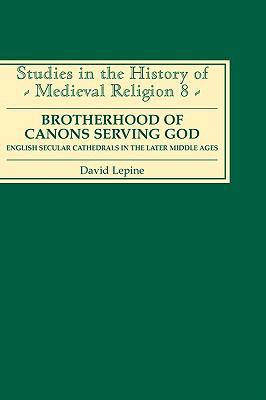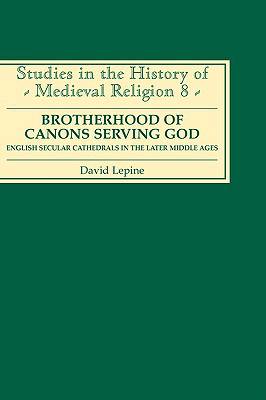
Je cadeautjes zeker op tijd in huis hebben voor de feestdagen? Kom langs in onze winkels en vind het perfecte geschenk!
- Afhalen na 1 uur in een winkel met voorraad
- Gratis thuislevering in België vanaf € 30
- Ruim aanbod met 7 miljoen producten
Je cadeautjes zeker op tijd in huis hebben voor de feestdagen? Kom langs in onze winkels en vind het perfecte geschenk!
- Afhalen na 1 uur in een winkel met voorraad
- Gratis thuislevering in België vanaf € 30
- Ruim aanbod met 7 miljoen producten
Zoeken
Brotherhood of Canons Serving God (a English Secular Cathedrals in the Later Middle Ages
English Secular Cathedrals in the Later Middle Ages
David N Lepine
€ 177,45
+ 354 punten
Omschrijving
This study focuses on the canons of the nine secular cathedrals in England in the later middle ages, who were amongst the most able and successful clerics of their age. After considering the functions of the cathedrals which provided them with a comfortable income and considerable status, Dr Lepine turns to the canons themselves, tracing their origins and analysing their careers. He examines the canons' residence at their cathedrals, establishing how many were resident in the close and how much time they spent there. The study concludes by presenting two case studies to show the vigour and diversity of capitular life in the later middle ages: Salisbury between 1398 and 1458 (its so-called golden age) and Lichfield from 1490 to 1540, on the eve of the Reformation. Dr DAVID LEPINE teaches history at Dartford Grammar School.
Specificaties
Betrokkenen
- Auteur(s):
- Uitgeverij:
Inhoud
- Aantal bladzijden:
- 256
- Taal:
- Engels
- Reeks:
- Reeksnummer:
- nr. 8
Eigenschappen
- Productcode (EAN):
- 9780851156200
- Verschijningsdatum:
- 24/08/1995
- Uitvoering:
- Hardcover
- Formaat:
- Genaaid
- Afmetingen:
- 156 mm x 234 mm
- Gewicht:
- 539 g

Alleen bij Standaard Boekhandel
+ 354 punten op je klantenkaart van Standaard Boekhandel
Beoordelingen
We publiceren alleen reviews die voldoen aan de voorwaarden voor reviews. Bekijk onze voorwaarden voor reviews.









